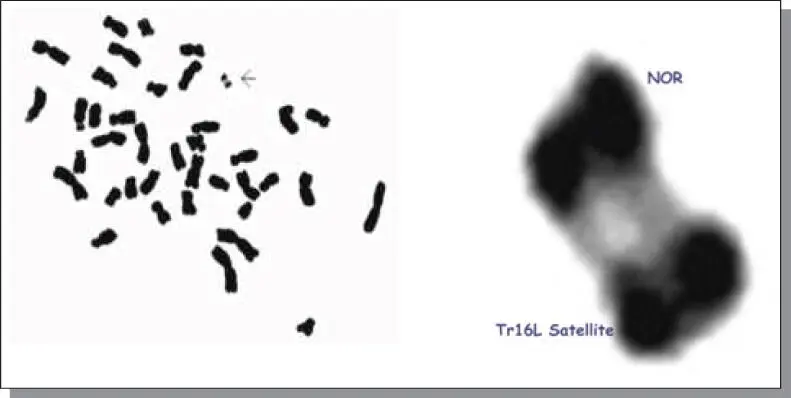
Figure B6.4A series of maize‐ Tripsacum ear types. Left to right: dent corn; an apomictic 39‐chromosome hybrid; an apomictic 38‐chromosome hybrid (Yudin); an apomictic 56‐chromosome hybrid; two apomictic 46‐chromosome hybrids; and two tetraploid Tripsacum dactyloides .
Transfer of apomixis from Tripsacum to maize
Apomixis is an asexual mode of reproduction through the seed, and is a genetically controlled process that bypasses female meiosis and fertilization to produce seed identical to the maternal parent. Apomixis is common in polyploid species where reproduction through classic meiotic reproductive events often result in high levels of seed abortion. Apomictic seed development is often viewed as an escape mechanism whereby ovule abortion in polyploid species can be reduced or eliminated through the omission of meiosis. Essentially, three forms of gametophytic apomixis are recognized: diplospory, apospory, and adventitious embryony. In Tripsacum , the dominating form of apomixis is diplosporous pseudogamy of the Antennaria type. In this form of apomixis, the embryo sac originates from the megaspore mother cell either directly by mitosis or following an interrupted meiosis. In addition, an infrequent occurrence of a Taraxacum type of diplosporous pseudogamy has also been observed (Burson et al. 1990).
Tripsacum has been suggested as a model system for the study of apomixis (Bantin et al. 2001). As of this report, the prevailing wisdom suggests that apomixis (at least for Tripsacum ) is controlled by no more than one or two genes, likely linked on a particular Tripsacum chromosome (Leblanc et al. 1995; Grimanelli et al. 1998). These results seem to be in agreement with molecular studies focused on understanding apomixis expression in other species (Noyes and Reiseberg 2000; Albertini et al. 2001).
Cytogenetic studies and GISH studies suggest this region may be Tr16L in the vicinity of the nucleolus organizing region which has homeology with the distal region of Mz6L (Kindiger et al. 1996b; Poggio et al. 1999). Still others suggest, from data generated from a Tripsacum dactyloides seed fertility study, that apomixis is a multi‐genic system that portends a difficult transfer to maize (Blakey et al. 2001). An additional theory, though not necessarily directed toward maize‐ Tripsacum hybrids, suggests that asynchronous meiosis in wide‐cross hybrids may induce apomictic behavior (Carmen 1997).
Regardless of the favorable light academics and researchers alike shed upon the prospects in this area of study, the research endeavor continues to be difficult, time consuming, and expensive. The wide range of views regarding the inheritance of the trait suggest there remain much work to be accomplished. In addition, various non‐profit organizations suggest that the development of this technology for agriculture is a monopolistic tool for the agrichemical industry. Several commercial‐academic research alliances are indeed active and utilizing several molecular approaches to attempt the mapping and actual cloning of the apomixis loci in Tripsacum maize and/or other species. Consequently, research progress in this area has become difficult to monitor following the development of confidentiality agreements, plant patents, commercial‐academic research funding collaborations, etc.
However, some recent information and research progress remain in the public domain. Recent evaluation of several apomictic maize‐ Tripsacum hybrids has identified the occurrence of one line that does not possess an intact Tr16 chromosome or the Mz6L‐Tr16L translocation ( Figure B6.5a,b). Random amplified polymorphic deoxyribonucleic acid (RAPD) markers previously known to be associated to apomixis (Kindiger et al. 1996b) continue to be present in this germplasm. Cytological analysis of this particular chromosome suggests the chromosome carries the nucleolus organizing region and the Tr16L satellite. This small, iso‐chromosome‐ appearing entity may indeed possess the loci conferring apomixis in this material.

Figure B6.5(a) (left). The satellite region of Tr16L (arrow) that confers apomixis in the V31 apomictic line. No normal or intact Tr16 is present in this line. (b) (right). An enlargement of the isochromosome with the nucleolus organizing region (NOR) and satellite regions identified.
Much has been written, scientific and otherwise, on the benefits of apomixis or the potential “sexual revolution” in cereal and crop species. The most obvious benefit of introducing apomixis into crops would be to allow the selection of a particular individual and propagate it indefinitely by seed. Theoretically, in an apomictic system, hybrids could be maintained indefinitely if the first division restitution (FDR) events discussed above did not occur. Most likely, apomixis will be first utilized to stabilize genetic combinations that otherwise could not occur naturally or are difficult or impossible to maintain in nature. The facts are that even if a prototype apomictic system is generated, such as in “apomictic maize” US patent No. 5 710 367, traditional breeding and gene transfer through backcrossing is questionable. Pollen sterility is, so far, the rule for all such hybrids and is likely caused by the presence of the same Tripsacum chromosome detailed in an earlier study (Maguire 1957, 1960). In addition, a near‐obligate level of apomictic seed development does not provide an opportunity to transfer apomixis to other maize germplasm. Also, in this apomictic maize germplasm, seed set remains poor and uncharacterized problems associated with endosperm development persist. Essentially, in the case of the apomictic maize patent, a closed breeding system exists.
Pitfalls in the development of an apomictic maize
FDR in apomictic maize‐ Tripsacum hybrids
One unique attribute found only in the apomictic backcross hybrids, irrespective of their possessing a 38‐chromosome (20Mz + 18Tr) or 39‐chromosome (30Mz + 9Tr) constitution, is the maintenance of their genetic composition. Theoretically, apomictic individuals will reproduce a genetic copy of themselves through the seed they produce. However, studies focused on this behavior in maize‐ Tripsacum hybrids have proven this will not necessarily be the case.
First division restitution (FDR) can lead to chromosome doubling in intergeneric hybrids of various grasses, of which many are of polyploid or of complex polyploid origin (Xu and Joppa 1995). Consequently, unreduced gametes bypass the reductional division and are generated only by a normal equational division. This behavior can occur during megasporogenesis or microsporogenesis; however, in the case of pollen sterile apomictic maize‐ Tripsacum hybrids, this behavior impacts genetic change by way of the megaspore. Studies utilizing both molecular and phenotypic evaluations have suggested that an FDR event can occur in apomictic Tripsacum dactyloides resulting in genome alterations in an apomictic genotype (Kindiger and Dewald 1996). This behavior has been visually verified by the occasional discovery of major chromosome rearrangements involving Mz6L, Tr16L, Mz2S, and other unknown maize and Tripsacum chromosomes during routine cytogenetic investigations involving both apomictic 38‐ and 39‐chromosome maize‐ Tripsacum hybrids. This component of diplosporous apomixis in Tripsacum and maize‐ Tripsacum hybrids has not been well studied or addressed.
Читать дальше














